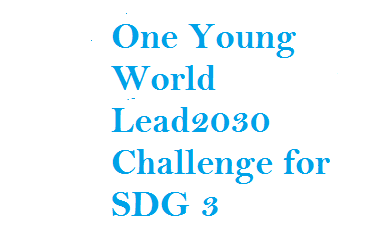- Six Reasons To Bring Millets To The Market!
- Hong Kong Court Makes Landmark Ruling Protecting Transgender Rights
- Substrate Promiscuity Of Fungi Generated Enzyme Laccase Shows Potential In Degrading Industrial Dye Effluents
- Union Minister Of Rural Development Holds A Meeting On ‘Cactus Plantation And Its Economic Usage’
- Ministry Of Tribal Affairs Organised One Day Mega Health Camp ‘Abua Bugin Hodmo-Our Better Health’ At Saraikela Kharsawan, Jharkhand
- Blue Flag Standards For Beaches In The Country
- India-Namibia Sign An MoU On Wildlife Conservation And Sustainable Biodiversity Utilization
- Hydrophobic Ingredients, In Combination With Obsolete Antibiotics, Can Counter Multidrug-Resistant Bacteria
- Promoting Cultivation Of Kala Namak Paddy
Global Employment Trends for Youth : Recovery in youth employment is still lagging, says ILO
Posted by: 2022-08-12 07:53:42 ,By Admin

GENEVA (ILO News) – Recovery in youth employment is still lagging, according to a new report by the International Labour Organization (ILO), which confirms that the COVID-19 pandemic has hurt young people more than any other age group.
The Global Employment Trends for Youth 2022: Investing in transforming futures for young people report finds that the pandemic has exacerbated the numerous labour market challenges facing those aged between 15 and 24 years, who have experienced a much higher percentage loss in employment than adults since early 2020. The total global number of unemployed youths is estimated to reach 73 million in 2022, a slight improvement from 2021 (75 million) but still six million above the pre-pandemic level of 2019, the report says.
The share of youth not in employment, education or training (NEET) in 2020 – the latest year for which a global estimate is available – rose to 23.3 per cent, an increase of 1.5 percentage points from the previous year and a level not seen in at least 15 years. This group of young people are at particular risk of seeing their labour market opportunities and outcomes deteriorate also over the longer-term as “scarring” effects take hold.
Young women are worse off than young men, exhibiting a much lower employment-to-population ratio (EPR). In 2022, 27.4 per cent of young women globally are projected to be in employment, compared to 40.3 per cent of young men. This means that young men are almost 1.5 times more likely than young women to be employed. The gender gap, which has shown little sign of closing over the past two decades, is largest in lower-middle-income countries, at 17.3 percentage points, and smallest in high-income countries, at 2.3 percentage points.
Regional differences
The recovery in youth unemployment is projected to diverge between low- and middle-income countries on the one hand and high-income countries on the other. High income countries are the only ones expected to achieve youth unemployment rates close to those of 2019 by the end of 2022, while in the other country income groups, the rates are projected to remain more than 1 percentage point above their pre-crisis values, says the report.
In Europe and Central Asia (ECA) the unemployment rate of young people is projected to be 1.5 percentage points higher than the world average in 2022 – 16.4 per cent versus 14.9 per cent, respectively. There has been substantial progress in reducing youth unemployment – for both women and men – but the actual and potential shocks of the war in Ukraine are highly likely to affect the results.
The unemployment rate of young people in the Asia and Pacific region is projected to reach 14.9 per cent in 2022, the same as the global average, although there are important divergences between subregions and countries.
In Latin American countries the youth unemployment rate is still worrying, projected at 20.5 per cent in 2022. Historically, young women’s unemployment rates have been higher than young men’s, but the crisis exacerbated this trend. The picture is radically different in North America, where the youth unemployment rates is projected to be below world average levels, at 8.3 per cent.
In Africa, a youth unemployment rate of 12.7 per cent masks the fact that many youths have chosen to withdraw from the labour market altogether. Over one in five young people in Africa were not in employment, education, or training (NEET) in 2020, and the trend has been deteriorating.
The Arab States have the highest and the fastest growing unemployment rate of young people worldwide, projected at 24.8 per cent in 2022. The situation is worse for young women in the region, with 42.5 per cent unemployment in 2022, which is almost three times as high as the global average for young women (14.5 per cent).
Opportunities in the green, digital and care economies
Young women and men are well placed to benefit from the expansion of green and blue (ocean resources and their sustainable use) economies. According to the report, an additional 8.4 million jobs for young people could be created by 2030 through the implementation of green and blue policy measures.
Targeted investments in digital technologies could also absorb high numbers of young workers. The report estimates that achieving universal broadband coverage by 2030 could lead to a net increase in employment of 24 million new jobs worldwide, of which 6.4 million would be taken by young people.
“What young people need most is well‑functioning labour markets with decent job opportunities for those already participating in the labour market, along with quality education and training opportunities for those yet to enter it."
Martha Newton, ILO Deputy Director-General for Policy
Investments in care sectors (in health and in education) benefit young people in four key respects: they improve young people’s employment prospects; they make it easier for young women and men with family responsibilities to remain in the labour force; they promote the well-being of young people by expanding education and training opportunities and catering for young people’s health; and, as a result of all the above, they help lower youth NEET rates, especially among young women. The report estimates that investments in care sectors would create 17.9 million more jobs for young people by 2030, in care sectors (14.4 million jobs) and in other sectors (3.4 million jobs).
The report finds that undertaking the green, digital and care measures together as part of a big investment push would raise global gross domestic product (GDP) by 4.2 per cent and create an additional 139 million jobs for workers of all ages worldwide, of which 32 million would be accounted by young people.
Decent work
Investment in these sectors must be accompanied by the promotion of decent working conditions for all young workers, the study says. This includes ensuring that they enjoy fundamental rights and protections including freedom of association, the right to collective bargaining, equal pay for work of equal value, and freedom from violence and harassment at work.
“The COVID-19 crisis has revealed a number of shortcomings in the way the needs of young people are addressed, especially the more vulnerable such as first-time jobseekers, school dropouts, fresh graduates with little experience and those who remain inactive not by choice,” said Martha Newton, ILO Deputy Director-General for Policy. “What young people need most is well‑functioning labour markets with decent job opportunities for those already participating in the labour market, along with quality education and training opportunities for those yet to enter it.”
Read more: Click Here
You may like similar news

‘India ready to help restore peace’: PM Narendra Modi tells Vladimir Putin on Ukraine conflict
Prime Minister Narendra Modi on Tuesday reiterated a peaceful solution to the ongoing Russia-Ukraine...

Chhath Puja 2024: Is it on November 05 or 07? Know the correct date, time of the auspicious four-day Hindu festival
If you thought that the October air is filled with festive spirit, wait till we tell you that the ce...

Bharat Tex 2025 gains international momentum:
Ministry of Textiles organized an interactive Session with Foreign Missions in India for Bharat Tex ...

PRESIDENT OF INDIA PRESENTS NATIONAL WATER AWARDS
The President of India, Smt. Droupadi Murmu presented the fifth National Water Awards in New Delhi t...

TMC MP Kalyan Banerjee breaks glass bottle after heated exchange with BJP leader in Waqf Bill meeting
Trinamool Congress leader Kalyan Banerjee on Tuesday smashed a glass water bottle during a heated ex...









